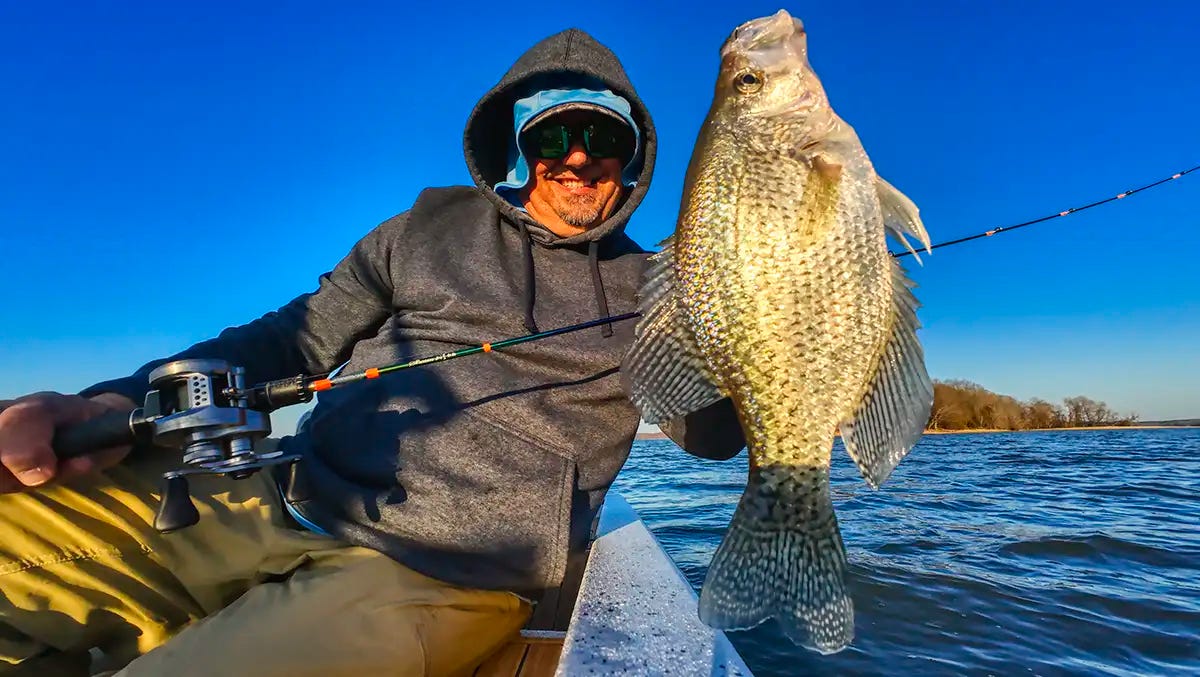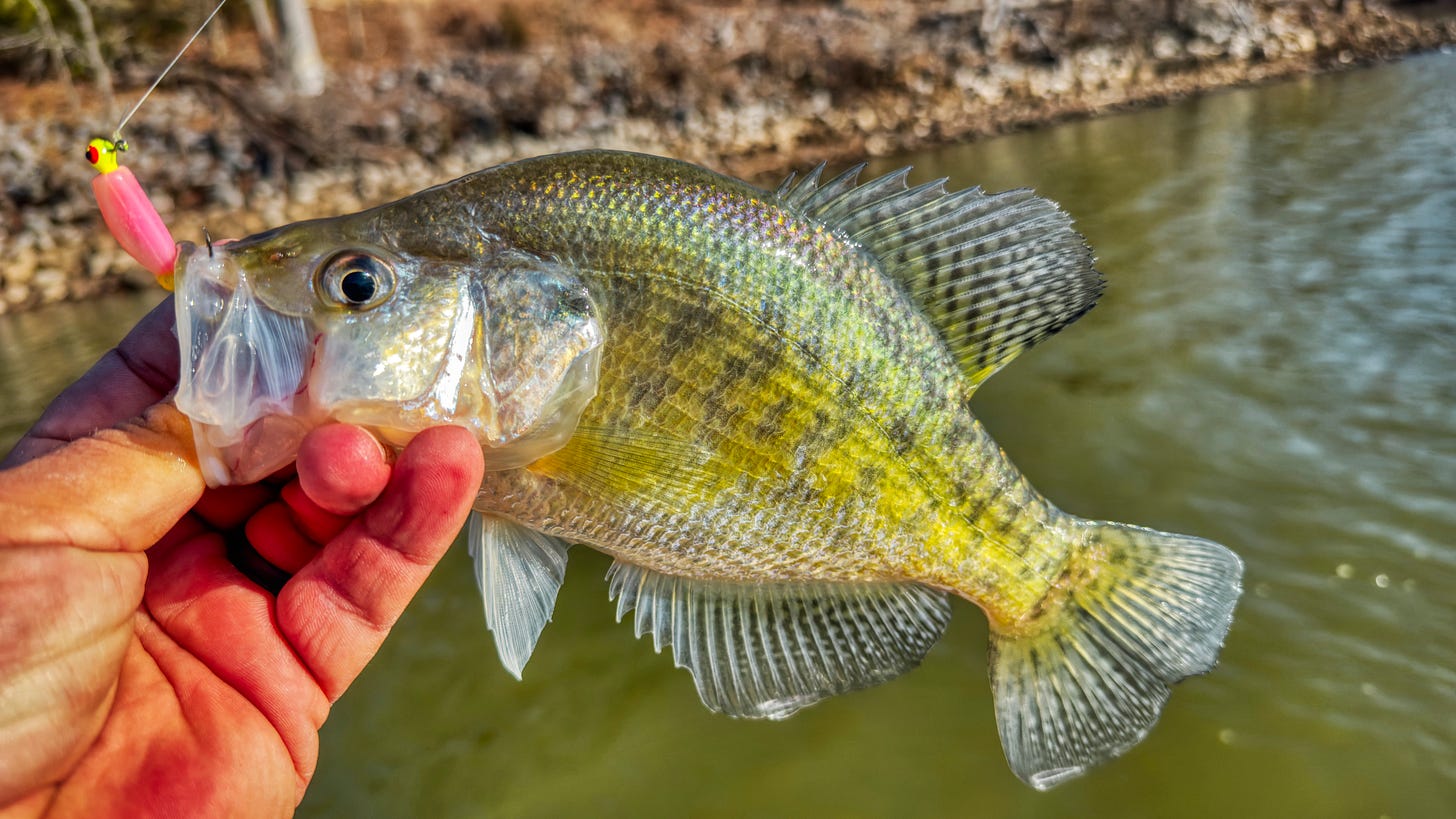Fishing the Winter Windows
A simple approach to capitalizing on unexpected weather patterns in the winter
Winter can be a great time to fish. It also, more often than not, can be a very tough time to fish. Fish can be very lethargic. The weather can be bitter and biting. And the fish are often very deep.
But I’ve learned to be weather watcher when it comes to fishing, and not just to see if it’s going to rain or snow or be windy on the day I want to go. I look for patterns in the weather to tell me when the fish might change and do something to make them a bit easier to catch.
This can often be the an effective plan in the winter. But also in other seasons as well. Let me explain with an example from last winter.
SHALLOW IN THE WINTER
Last winter in February, we had very mild conditions in Kentucky. In fact we saw some 60-70 degree days—jeans and t-shirts weather in the middle of winter. And we had some unseasonably warm rains. Several in fact. So much so that I noticed less and less fish in my deeper winter spots and even the mid depth places I had been finding some crappie had become eerily quiet.
I ended up moving shallower. And then shallower again. And then I found a bunch of big crappie in 2-3 feet of water. In the middle of winter. At first I was like this is pretty weird. Then I realized, this made total sense. The water temperatures out towards the mouth of the bays and creeks was in the low 40s, but back here it was in the low 50s. Apparently the baitfish and the gamefish got the memo because it was alive back in the shallows. I slammed tons of nice crappie on shallow cover in dirty water and blow away how many fish just kept on pushing back to that warmer waters.
Those weather patterns like that create anomalies. But more importantly they create opportunities. I’ve chased those patterns for years bass fishing and now I’ve seen where it has applied to bass fishing, crappie fishing, bluegill fishing and even trout fishing. And it’s not just warm runoff. It can be current. It can be water color. It can simply be calm conditions and sunshine that makes fish do a 180 on what they had been doing, and you can really capitalize on that.
SUN POWERED PROGRESS
One of the things in winter I look for is a few sunny calm days together. It doesn’t even have to be warm. If it’s sunny and calm, the sun can cause a lot of fish to rise up and warm in the water column. One of the better days I ever had crappie fish was the day after the ice went off the ramps and we could launch again. The water was cold but the sun had been out for a couple of calm days.
I found a bunch of big crappie suspending just a few feet under the surface over the deep creeks they had been in previously. They just moved up to the surface to warm their eggs. So the days didn’t have to warm up a bunch. But the sun coupled with calm conditions presented a warming activity for the fish.
These winter weather anomalies have helped me create a more open mind about fishing. Before I had modern electronics. I would just fish deep and if I didn’t catch much assumed they were locked jaw. I don’t think that much anymore. Now when I don’t really find the fish, I assume it’s because a weather happening has caused a change that I wasn’t able to find.
Generally speaking if I can get a few days on a body of water, I can figure out what the fish are doing. Sometimes I can figure it out in a few hours. But in the winter, the haystack you are searching in for a needle seems a lot larger than it is in the spring.
CHANGING APPROACHES
I also find myself having to adapt my presentations a lot. I’ve had my eyes opened recently on how much a bobber helps fishing in the winter. Something about being able to move a bait very slowly at one level really improves your bite to presentation ratio in my opinion. When I’m normally fishing deep in the winter I’m fishing 1/16- and 1/8-ounce jigs. But as the fish change I often change to 1/32-ounce jigs and employing a bobber to keep the bait at the right level without moving it too much.
I use a 1/32-ounce jig a lot when winter fish start moving up. Moving up towards the bank, back of the creeks or just up closer to the surface in deeper water. And it can require multiple casts to finally get that fish to react to that subtle slow presentation to trigger them. But that to me is part of the fun of it. Really perfecting your presentation to get reactions. Not just hum through there and give up after one cast.
I also will often size up or down. It seems for some reason that a very small jig will get reactions when a normal sized one doesn’t. And I’ve also seen where a big bulky jig gets fish to bite in these altered weather windows in the winter. So again be ready to adapt your presentation to fit these new feeding windows that open up with these weather anomalies.








Very informative! We had an anomaly here in Nebraska one winter where water was being pumped from irrigation wells and diverted into a creek and sent to neighboring Kansas. The water temperature was 57 degrees as it entered the small lake I fished in spring through fall. This brought the bluegill up the creek and big bass soon followed. I caught numerous big bass that winter from the kayak which would normally be iced over. These are the nuances we can find when going out and exploring our fishing waters. 😎